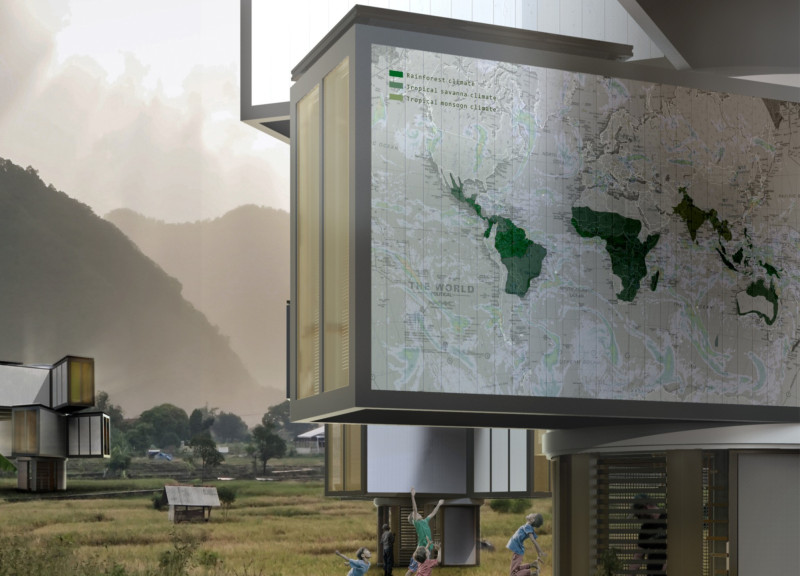5 key facts about this project
At its core, the project represents a multi-purpose facility that accommodates various activities. The design emphasizes versatility and adaptability, allowing the space to host different events seamlessly. This flexibility is evident in the layout and spatial organization, which encourages natural flow and interaction among occupants. Emphasizing transparency, large windows and open areas create a visual dialogue between the interior and exterior, allowing ample natural light to permeate the space and reducing the need for artificial lighting.
The materiality used in the construction is carefully selected to enhance both aesthetic appeal and sustainability. The predominant materials include reinforced concrete, timber, glass, and metal, each chosen for their durability and environmental performance. The concrete structure provides a solid foundation, while timber accents introduce warmth, adding a tactile quality to the environment. Extensive use of glass not only amplifies the connection to the outdoors but also promotes energy efficiency through strategic placement, which maximizes sunlight penetration.
Unique design approaches characterize the architectural strategies employed in this project. The integration of green roofs and living walls exemplifies a commitment to biophilic design, allowing the building to blend seamlessly with its environment. This approach not only contributes to the aesthetic qualities of the structure but also enhances air quality and supports biodiversity within the urban landscape. The incorporation of solar panels and rainwater harvesting systems underscores a forward-thinking approach to sustainability, highlighting the importance of self-sufficiency in modern architecture.
The architectural designs address more than just functional requirements; they are also a response to the local culture and community. Public spaces are thoughtfully positioned to invite community engagement, with plazas and gathering spots that encourage social interaction. The design intentionally creates opportunities for diverse activities, fostering a sense of belonging among residents and visitors alike.
Beyond these elements, the project's architectural plans and sections present a well-considered relationship between different functional areas, reflecting a deep understanding of user experience. Circulation paths are intuitive, aiding in wayfinding and accessibility, while also providing moments of pause and reflection throughout the space. Elements such as shading devices and overhangs not only contribute to aesthetic harmony but also play a vital role in energy management, ensuring occupant comfort throughout varying climatic conditions.
In examining this architectural endeavor, it becomes clear that every detail is infused with intention. The resulting design embodies the principles of contemporary architecture while responding to the specific needs of the environment and community it serves. For those interested in gaining a deeper insight into the intricate nuances of this project, exploring the architectural plans, sections, designs, and ideas will reveal the thoughtful consideration that informs both its purpose and its place within the urban fabric. Engaging with the full presentation of the project will enhance understanding and appreciation of the numerous layers that contribute to its overall success.


























